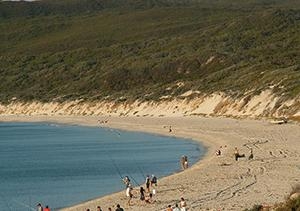Cutting up the coast: natural problems need natural boundaries
Nature doesn't always abide by arbitrary borders, which is why local governments need to pool their resources to tackle coastal management, writes Tom FitzGerald.
Nature doesn't always abide by arbitrary borders, which is why local governments need to pool their resources to tackle coastal management, writes Tom FitzGerald.

OPINION: Most of Australia’s population and infrastructure are on the coast. Continuing development pressure, global environmental threats and climate change are increasing the risk to the integrity of the coast and the people who use it.
Local governments are increasingly being asked to manage these risks, but often they are too small and under-resourced to deal with them. More troublingly, the boundaries of these councils rarely make sense in the ever-changing coastal environment; they’re not the best jurisdictions for sustainable coastal management.
Local councils are at the forefront of coastal management in NSW today. They will be required to do even more in the coming years, and increasingly, make difficult coastal management decisions. There are 49 councils that abut the coastline from Bega in the south, up to the Tweed bordering Queensland in the north. They each have very different communities, coastal ecosystems and coastal form. In the Sydney area alone, 26 councils have coastal margins.
Coastal management jurisdictions representing geographically larger areas would provide a better solution to current constraints. Limited human and financial resources could be pooled, efficiencies gained, knowledge shared, and funding shortfalls could be better leveraged from other sources. For small councils, inadequate resourcing and limited funds have always been the difficulty in managing the coast effectively.
Any new, larger jurisdictions should be based on ecosystem or geophysical boundaries. In the UK, Shoreline Management Plans are based not on arbitrary government boundaries but on “sediment cells”. Sediment cells are large sections or compartments of the coast with similar environmental conditions.
Divided by prominent geological features like headlands, the cells form a naturally bounded system where sediment shifts around – pushed and pulled by coastal processes like wind, waves and tides. These processes all work toward resultant changes in coastal landforms. And it is this understanding of the interplay between landform and process that underpins good coastal management.
This approach is already finding favour in Australia, with Western Australia recently completing a study defining sediment cells as the basis for its coastal management.Woodroffe et al in their recent report have also recommended this approach be applied all around the coast of Australia.
Natural boundaries transcend the arbitrary boundaries of current governments. They are fundamental in the manifestation of coastal issues, and would allow for a system-wide appraisal of evidence and prioritisation of coastal adaptation actions.
In NSW, new, larger jurisdictions could establish dedicated, multi-stakeholder, representative groups that would bring together the different coastal voices and promote shared understanding and agreed action. Setting the appropriate scale for coastal management can draw significant advantages in terms of economies of scale and coordination, as well as independent and democratic decision making.
In the context of the latest round of coastal management reforms, a local government review, a new approach to managing the marine estate, and a proposednew planning framework for NSW we need to have a broad discussion about all aspects of governance so we make the best choices.
The first tranche of coastal management “reforms” in NSW has been controversial. However all is not lost. The NSW Government must be bold in its vision for governing the sustainable management of the coast, our coast. There exists no better opportunity than now to display strong leadership and make the necessary transformations.
Will the next stage of coastal management reforms in NSW deliver the reform that’s needed?
Tom FitzGerald is a PhD candidate in coastal risk management at the School of Biological, Earth and Environmental Sciences, UNSW.
This opinion piece was first published in The Conversation.